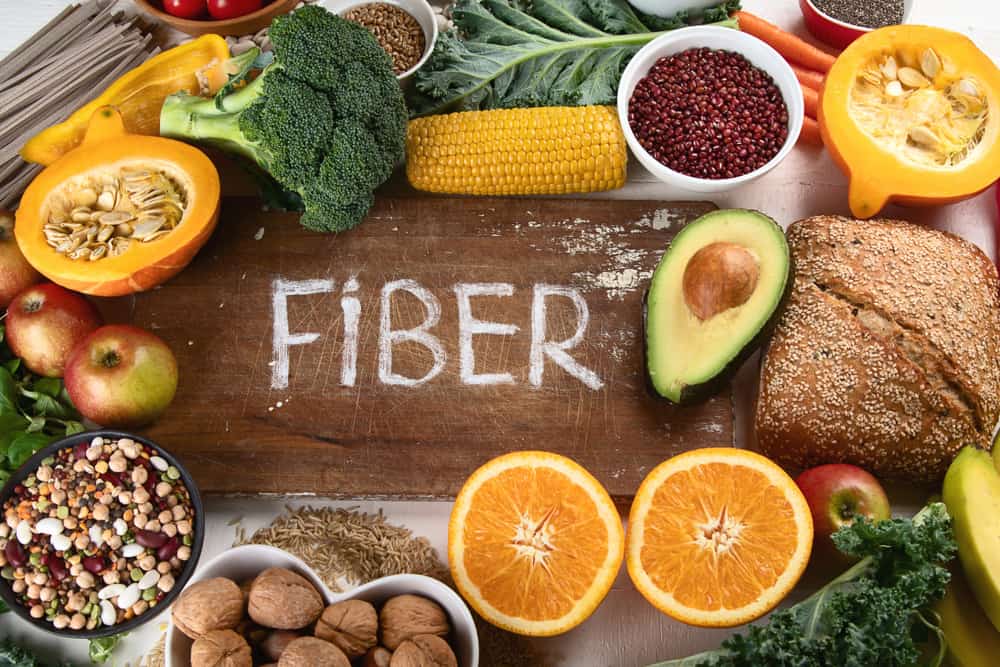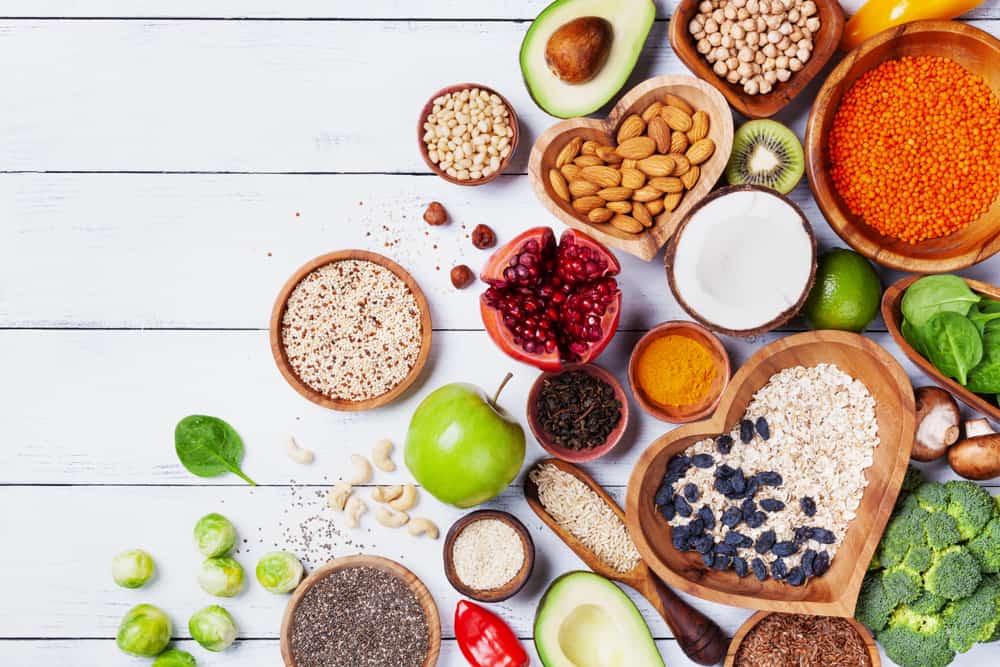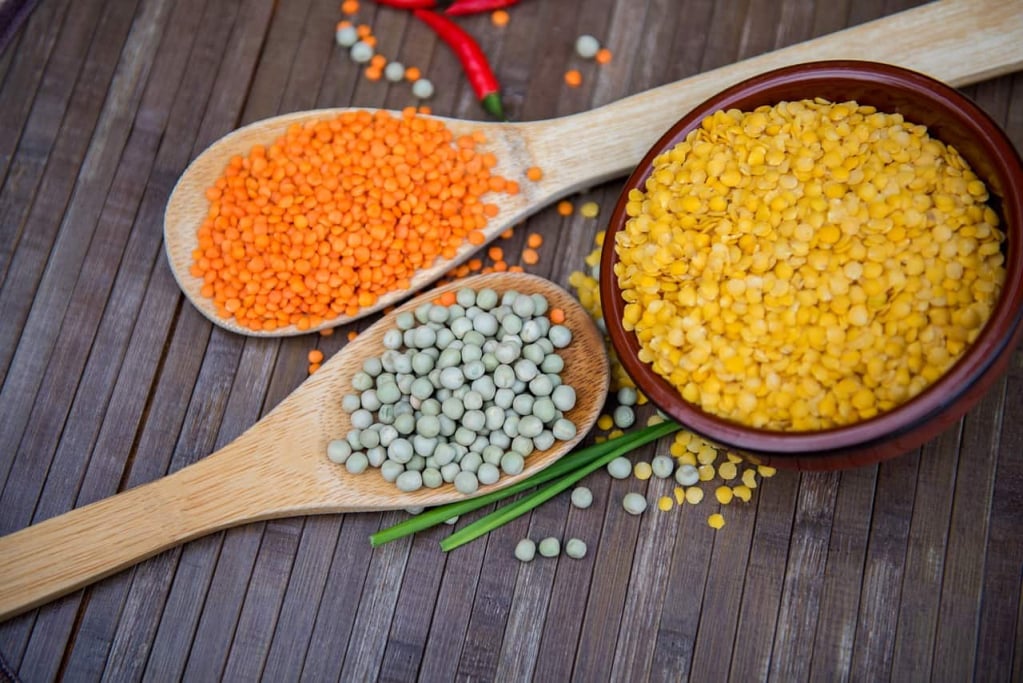List of foods high in fiber that should be on your menu
Maybe you already know how important fiber is for digestive health. Foods high in fiber are not only beneficial for smooth bowel movements or preventing chronic disease, but they can also help lose weight.
You also don’t need to be confused about finding sources of fiber, because this nutrient is contained in various types of food. So, how does fiber lose weight and what foods are its sources? Check out the following reviews.
Fiber intake and body weight

Fiber is basically a type of carbohydrate that cannot be digested by the body. Different from other nutrients that are absorbed by the intestine, the fiber in food moves through the stomach, small intestine and large intestine before finally leaving with feces.
There are two kinds of dietary fiber, namely soluble fiber and insoluble fiber. Soluble fiber breaks down in water and forms a gel. The fiber which is abundant in these fruits is very useful for controlling blood sugar and cholesterol.
Meanwhile, insoluble fiber plays a greater role in smoothing bowel movements. Its main function is to compact the dregs of food that will become feces. Foods high in insoluble fiber include vegetables, potatoes, and whole grains.
Both types of fiber are equally beneficial for the body. However, soluble fiber appears to have one extra benefit: it helps with weight loss. Here’s how insoluble fiber works in reducing your fat and body weight.
1. Reduce belly fat
Soluble fiber that has formed a gel can slow down the absorption of nutrients in food, including fat. Various studies have shown that this is useful for reducing belly fat.
2. Lowering appetite
A number of studies found that soluble fiber can decrease the amount of hunger hormone in the gut. Fiber also slows down the movement of food in the intestines. This provides a feeling of fullness longer so you don’t overeat.
3. Increase the number of good bacteria
Foods high in fiber can increase the number of good bacteria in the intestines. Experts don’t fully understand the mechanism yet, but these useful bacteria are known to accelerate fat burning and reduce the rate at which fat is stored.
4. Helps control cholesterol
Another function of soluble fiber is to lower total cholesterol, LDL cholesterol (low-density lipoprotein), and triglycerides. Normal cholesterol levels play a big role in maintaining ideal body weight.
High-fiber foods all around you

According to the nutritional adequacy figures published by the Indonesian Ministry of Health, the need for fiber for adults ranges from 30-38 grams per day. To meet these needs, you can eat the following foods.
1. Pear
It is not without reason that pears are in the top row of fiber-rich foods. Just one small pear contains 5.5 grams of fiber. This amount can meet about 20% of your daily fiber needs.
Pears also contain a type of fiber called pectin. Pectin is very effective for smooth bowel movements and supports the growth of intestinal bacteria. This is why the benefits of pears are especially pronounced for people suffering from constipation.
2. Avocado
The uniqueness of avocado lies in its high fat content, very different from most fruits which contain carbohydrates on average. Not only high in fat, this fruit is also rich in fiber.
One hundred grams of avocado contains 6.7 grams of fiber which is equivalent to 22% of the daily requirement of an adult. Avocados are also rich in vitamin B complex, C, E, and various types of minerals that are beneficial for digestion.
3. Raspberries
Other foods that are high in fiber are raspberries. Eating one hundred grams of fruit raspberries can give your body 6.5 grams of fiber. This figure is approximately equal to 21.6% of your daily needs.
This strong aromatic fruit is also rich in vitamin C and manganese. Not only that, raspberries also contains a variety of antioxidant compounds that can protect body cells from the negative effects of free radicals.
4. Lentils

Lentils are high protein beans that are dried and cooked before eating. One hundred grams of cooked lentils contains 7.3 grams of fiber, or roughly the equivalent of 24.3% of an adult’s daily needs.
Apart from being rich in fiber, this food ingredient is also abundant in vitamins and minerals. You can meet your intake of vitamins B1, B9, manganese, and phosphorus by adding lentils to your daily menu.
5. Peas
Often thought of as a vegetable, legumes are actually part of the legume family. The fiber content of peas is relatively high, which is about 8.3 grams for every 100 grams of cooked beans.
Like nuts in general, peas also contain a variety of protein, vitamins and minerals. Other nutrients found in these foods include protein, manganese, vitamins B1, B9, and K.
6. Wheat
Wheat is not only high in fiber, but also touted as one of the healthiest foods. The reason is, this food is very rich in macro nutrients, vitamins, minerals and antioxidants.
Wheat seeds also contain water soluble fiber called beta-glucans. This fiber can help control blood sugar and cholesterol and strengthen the immune system, especially in children.
7.Chia seeds (chia seeds)
Chia seeds are the black seeds of the plant Salvia hispanica who are still a family with mint. Consumption of these foods is increasingly popular with the increasing trend of healthy living. No wonder, considering that the nutritional content of chia seeds is indeed very rich and varied.
As an illustration, one hundred grams of chia seeds contain 34.4 grams of fiber or the equivalent of 114% of the daily fiber requirement for adults. In addition, chia seeds are also high in protein, healthy fats, calcium, phosphorus and manganese.
Fiber is a nutrient that is very easily found in food ingredients. In addition to the various examples mentioned above, you can also meet your fiber needs by eating nuts, tubers, and vegetables.
Don’t forget to balance your fiber intake with enough water. The right combination of fiber and water is very effective for smooth bowel movements and maintains overall health.
Hello Health Group does not provide medical advice, diagnosis or treatment.